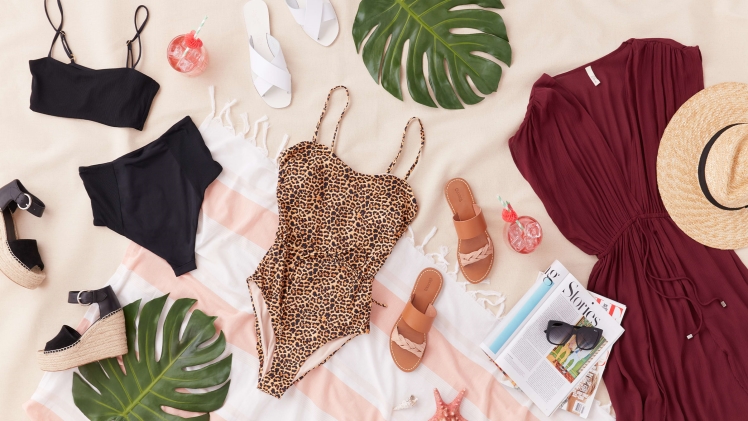Whether you’re off to the beach or to a pool party, a big part of looking and feeling fantastic is wearing the right swimsuit. And whether you choose to wear a bikini, one-piece, monokini or shaping swimwear, there are few aspects you must keep in mind to ensure the swimwear you purchase will serve you well. So, read on to know about what to look for in swimwear before investing in them.
The Fabric
Good quality swimwear is made of man-made fabric that resists water absorption and thus does not get heavy in the water, unlike, say, cotton. Additionally, as swimsuits are meant to stretch over your body, ensure that they don’t become transparent when stretched or wet. And typically, quality swimsuits are made of a blend of Nylon and Elastane. Meanwhile, responsible manufacturers go to the lengths of using recycled material to reduce their environmental impact.
Swimwear fabric generally stretches either horizontally or both horizontally and vertically. The former is suited for two-piece suits, and the latter makes an excellent choice for one piece and maillot bathing suits.
And before you buy a swimsuit, check to make sure the print on it does not get distorted when stretched. Such print can flake or fade off after continued use and will reduce the lifespan of a beautiful swimsuit.
Is Your Swimsuit Lined?
If so, check what type of lining has been used. Most lining material will stretch both ways to prevent any sort of bunching at the seams. Additionally, lining material can also provide support to your body and smoothen out the contours of your curves.
Pay Attention to the Elastic Used
Most often, you will find elastic in the edges of the swimsuit, that is, around the cuts for your legs, along the neck and armpit area, and across the back. The elastic holds the garment against your body, and if it loosens, you could have an embarrassing wardrobe malfunction. And if it frays, unfortunately, you will have to throw away your entire swimsuit. So, check with the manufacturer that the elastic used is sturdy and can be used in chlorinated water, saltwater, and under the harsh sun.
What Kind of Thread Is Used, and How Well Is the Garment Sewn?
The thread used in swimsuits, like the fabric, needs to be man-made. Polyester thread, unlike cotton, can usually withstand chlorine and saltwater. Some manufacturers also use nylon threads, especially for shaping swimwear.
Style and Pattern of the Swimsuit
If you are specifically looking for swimwear to enhance your curves and hide some of the uncomfortable flab, there are particular styles that can be very flattering for your body type. The fundamental design trick is to use the swimsuit to create a single, elongated line of vision running from your head to toe.
For instance, for a pear-shaped body, you can draw attention away from the lower half of your body and go for styles with ruffles and detailing on the top half of your suit. A plunging neckline will also help to create that visual symmetry. And if you have an apple-shaped figure, highlight your splendid legs with high-cut one-piece swimsuits. You can also try high waist tankinis in solid colours. Meanwhile, if you are athletically built, you can go for bold prints and monokinis. Also, look for embellishment, like belts and ties, near your waistline. Finally, for someone who is curvy, swimwear with underwire can easily jack the notch up from an ok look to an absolutely fabulous one.
A day out in the water should be filled with a whole lot of fun. And the last thing you should do is to be sidelined by how conscious you feel in your swimsuit. While your body is beautiful, no matter its shape and size, a bit of strategic support goes a long way in giving it extra glamour. So go on and experiment with all those fabrics and styles and prints out there to find your dream swimsuit!

